Birth name Ian Fraser Kilmister Years active 1965–2015 Instruments Bassvocals | Name Ian Kilmister Height 1.78 m Role Musician | |
 | ||
Also known as Lemmy KilmisterIan Fraser Willis Born 24 December 1945Burslem, Staffordshire, England ( 1945-12-24 ) Genres Heavy metalrock and rollhard rockspeed metal Occupation(s) Musiciansingersongwriter Music groups Motorhead (1975 – 2015), Hawkwind (1972 – 1975), the Head Cat (2000 – 2015), Sam Gopal (1968 – 1969) Children Sean Kilmister, Paul Inder Similar People Phil Taylor, Mikkey Dee, Phil Campbell, Ozzy Osbourne, Eddie Clarke | ||
Mot rhead s lemmy talks w eric blair 1997
Ian Fraser Kilmister (24 December 1945 – 28 December 2015), better known as Lemmy, was a British musician, singer, and songwriter who founded and fronted the rock band Motörhead. His music was one of the foundations of the heavy metal genre. He was known for his appearance (including his friendly mutton chops), his distinctive gravelly, "rasp[y]" singing voice, which "...was one of the most recognisable voices in rock", and his way of singing, looking up towards "...a towering microphone tilted down into his weather-beaten face". He was also known for his unmistakable bass playing style, in which he used his Rickenbacker bass to create an "overpowered, distorted rhythmic rumble". Another unique aspect of Lemmy's bass sound is that he often played power chords using a growling overdriven Marshall tube bass stacks. Alongside his music career, he also had many minor roles and cameos in film and television.
Contents
- Mot rhead s lemmy talks w eric blair 1997
- Memorial service and celebration of ian fraser lemmy kilmister full best quality 1080p
- Early life
- 19601970 Early years
- 19711975 Hawkwind
- 19752015 Motrhead
- Personal life
- Later years and death
- Funeral
- Tributes
- Collaborations and songwriting
- Cameo appearances
- Lemmy film
- In video games
- Equipment
- Discography
- Member of the Rockin Vickers
- Member of Sam Gopal
- Member of Hawkwind
- Member of Robert Calverts band
- Side projects and career spanning groups
- Band collaborations
- Charity collaborations
- Guest appearances
- Film soundtracks tribute wrestling and various artists albums
- Video tapelaser disc
- DVD
- References
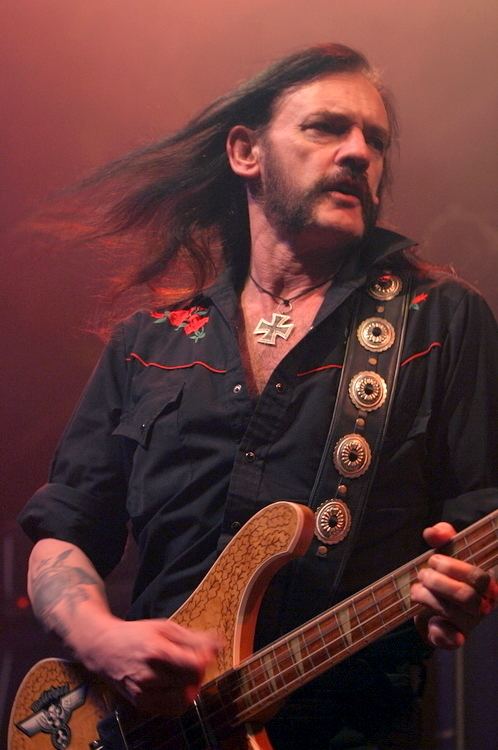
Lemmy was born in Stoke-on-Trent and grew up in North Wales. He was influenced by rock and roll and the early Beatles, which led to him playing in several rock groups in the 1960s, including the Rockin' Vickers. He worked as a roadie for Jimi Hendrix and The Nice, before joining the space rock band Hawkwind in 1971, singing lead on their hit "Silver Machine". After being fired from Hawkwind for drug possession, he founded Motörhead as lead singer, bassist, songwriter and frontman. Motörhead's success peaked in 1980 and 1981 and included the hit single "Ace of Spades" and the top charting live album No Sleep 'til Hammersmith. Lemmy continued to record and tour regularly with Motörhead until his death in December 2015 in Los Angeles, where he had lived since 1990.
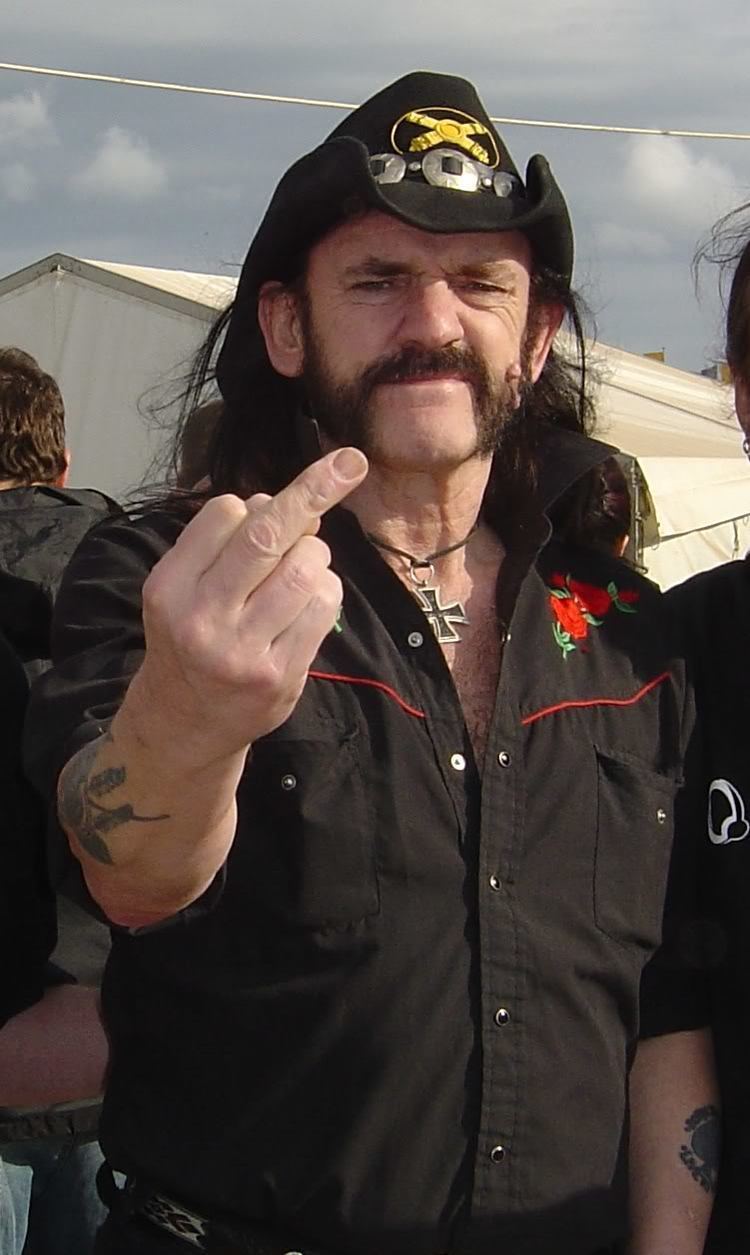
Aside from his musical activities, Lemmy was well known for his hard-living lifestyle, chain smoking, and regular consumption of alcohol (notably Jack Daniel's Tennessee whiskey) and amphetamines.
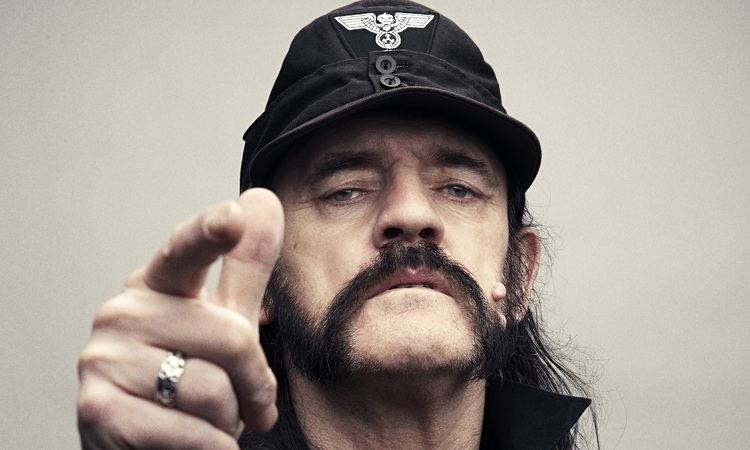
Memorial service and celebration of ian fraser lemmy kilmister full best quality 1080p
Early life
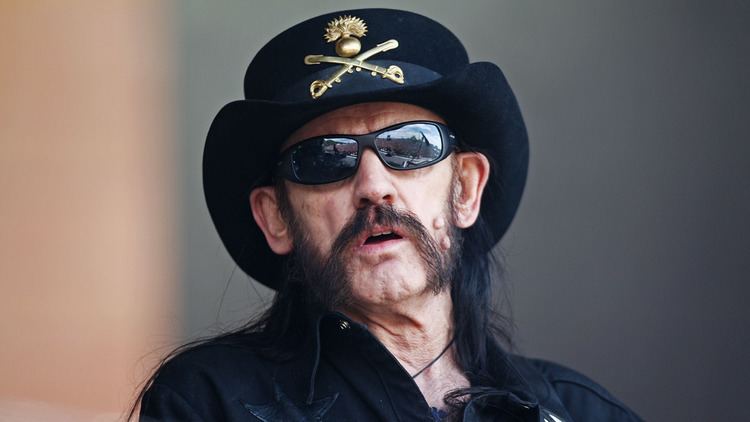
Lemmy was born on Christmas Eve in the Burslem area of Stoke-on-Trent, Staffordshire. When he was three months old, his father, an ex-Royal Air Force chaplain and concert pianist separated from his mother. His mother and grandmother moved to nearby Newcastle-under-Lyme, then to Madeley. When Lemmy was 10, his mother married former footballer George Willis, who already had two older children from a previous marriage, Patricia and Tony, with whom Lemmy did not get along.
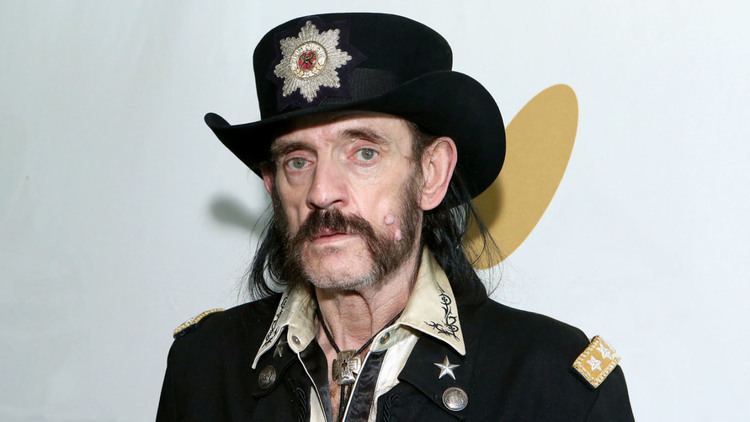
The family moved to a farm in the Welsh town of Benllech, Anglesey, with Lemmy later commenting that "funnily enough, being the only English kid among 700 Welsh ones didn't make for the happiest time, but it was interesting from an anthropological point of view". He attended Sir Thomas Jones' School in Amlwch, where he was nicknamed "Lemmy". It was later suggested by some that the name originated from the phrase "lemmy [lend me] a quid 'til Friday" because of his alleged habit of borrowing money from people to play slot machines, although Lemmy himself said that he did not know the origin of the name. He soon started to show an interest in rock and roll music, girls, and horses.
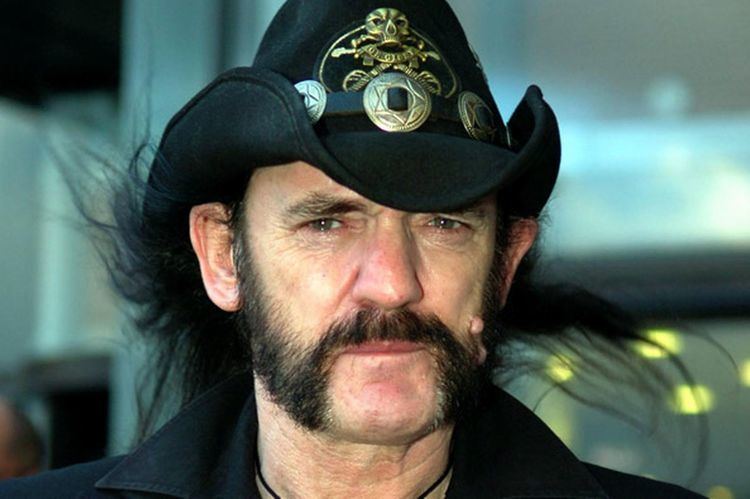
In school, Lemmy noticed a pupil who had brought a guitar to school and had been "surrounded by chicks". His mother had a guitar, which he then took to school, even though he could not play, and was himself surrounded by girls. By the time he left school, his family had moved to Conwy. There, he worked at menial jobs including one in the local Hotpoint electric appliance factory, while also playing guitar for local bands such as the Sundowners and spending time at a horse-riding school. Lemmy saw the Beatles perform at the Cavern Club when he was 16, and then learned to play along on guitar to their first album Please Please Me. He also admired the sarcastic attitude of the group, particularly that of John Lennon.
1960–1970: Early years
In Stockport, Lemmy joined local bands the Rainmakers and then the Motown Sect who played northern clubs for three years. In 1965 he joined The Rockin' Vickers who signed a deal with CBS, released three singles and toured Europe, reportedly being the first British band to visit the Socialist Federal Republic of Yugoslavia. The Rockin' Vickers moved to Manchester, where they lived together in a flat. There Lemmy got involved with a woman named Tracy who bore him a son, Paul Inder. Lemmy did not have any involvement with him until the boy was six.
Leaving the Rockin' Vickers, Lemmy moved to London in 1967. He shared a flat with Noel Redding, bassist of the Jimi Hendrix Experience, and with Neville Chesters, their manager. He got a job as a roadie for the band. In 1968 he joined the psychedelic rock band Sam Gopal under the name Ian Willis and recorded the album Escalator which was released in 1969. After meeting Simon King in a Chelsea shopping centre in 1969, he joined the band Opal Butterfly; but the group soon folded, having failed to raise enough interest with their singles.
1971–1975: Hawkwind
See also Hawkwind (1970–75: United Artists era)In August 1971 Lemmy joined the space rock band Hawkwind, who were based in Ladbroke Grove, London, as a bassist and vocalist. He had no previous experience as a bass guitarist, and was cajoled into joining immediately before a benefit gig in Notting Hill by bandmate Dik Mik to have two members who enjoyed amphetamines. He quickly developed a distinctive style that was strongly shaped by his early experience as a rhythm guitarist, often using double stops and chords rather than the single note lines preferred by most bassists. His bass work was a fundamental part of the Hawkwind sound during his tenure, perhaps best documented on Space Ritual. He also provided the lead vocals on several songs, including the band's biggest UK chart single, "Silver Machine", which reached No. 3 in 1972.
In 1975 Lemmy was arrested at the Canada/US border in Windsor, Ontario, on drug possession charges; he spent five days in jail but was released without charge. Nonetheless he was fired from Hawkwind.
1975–2015: Motörhead
After Hawkwind, Lemmy formed a new band called "Bastard" with guitarist Larry Wallis (former member of the Pink Fairies, Steve Took's Shagrat and UFO) and drummer Lucas Fox. Lemmy and Took were friends, and Took was the stepfather to Lemmy's son Paul. When his manager informed him that a band by the name of "Bastard" would never get a slot on Top of the Pops, Lemmy changed the band's name to "Motörhead" – the title of the last song he had written for Hawkwind.
Soon after, both Wallis and Fox were replaced with guitarist "Fast" Eddie Clarke and drummer Phil "Philthy Animal" Taylor and with this line-up the band began to achieve success. Lemmy's guttural vocals were unique in rock at that time, and were copied during the time when punk rock became popular. The band's sound appealed to Lemmy's original fans and, eventually, to fans of punk. Lemmy asserted that he generally felt more kinship with punks than with metalheads; he even played with the Damned for a handful of gigs when they had no regular bassist. The band's success peaked in 1980 and 1981 with several UK chart hits, including the single "Ace of Spades", which remained a crowd favourite throughout the band's career, and the UK No. 1 live album No Sleep 'til Hammersmith. Motörhead became one of the most influential bands in Heavy metal. Their – and Lemmy's – last live performance was in Berlin on 11 December 2015.
Personal life
At the age of 17, Lemmy met a holidaying girl named Cathy. He followed her to Stockport, Greater Manchester, where she gave birth to his son Sean, who was put up for adoption. In the 2010 documentary film Lemmy, he mentioned having a son whose mother has only recently "found him" and "hadn't got the heart to tell him who his father was", indicating that the boy – perhaps Sean – was given up for adoption.
In the Channel 4 documentary Motörhead: Live Fast, Die Old, broadcast on 22 August 2005, it was claimed that Lemmy had "bedded" in excess of 2,000 women. Lemmy stated: "I said more than a thousand, the magazine made two thousand of it." Maxim had Lemmy at number 8 on its top ten "Living Sex Legends" list, as they claimed that he had slept with around 1,200 women. Lemmy is one of the characters in the book Sex Tips from Rock Stars by Paul Miles.
Dave Grohl, on his Probot website, describes musicians with whom he has worked. In his entry for Lemmy, he wrote:
We recorded his track in Los Angeles in maybe two takes about a year and a half ago. Until then I'd never met what I'd call a real rock 'n' roll hero before. Fuck Elvis and Keith Richards, Lemmy's the king of rock 'n' roll – he told me he never considered Motörhead a metal band, he was quite adamant. Lemmy's a living, breathing, drinking and snorting fucking legend. No one else comes close.
Lemmy was well known for his alcohol abuse. The documentary Live Fast Die Old stated that he drank a bottle of Jack Daniel's every day and had done so since he was 30 years old. In 2013, Lemmy stopped drinking Jack Daniel's for health reasons. During his time with Hawkwind he developed an appetite for amphetamines and LSD, particularly the former. Before joining Hawkwind, he recalled Dik Mik, a former Hawkwind sound technician, visiting his squat in the middle of the night and taking speed with him. They became interested in how long "you could make the human body jump about without stopping", which they did for a few months, until Mik ran out of money and wanted to return to Hawkwind, taking Lemmy with him.
I first got into speed because it was a utilitarian drug and kept you awake when you needed to be awake, when otherwise you'd just be flat out on your back. If you drive to Glasgow for nine hours in the back of a sweaty truck you don't really feel like going onstage feeling all bright and breezy ... It's the only drug I've found that I can get on with, and I've tried them all – except smack [heroin] and morphine: I've never "fixed" [i.e., injected] anything.
In November 2005, he was invited to the National Assembly for Wales as a guest speaker by Tory member William Graham. He was asked to express his views on the detrimental effects of drugs, and called for the legalisation of heroin. He stated that legalisation would eradicate the drug dealer from society and generate money from its taxation, however hard this would be to accept.
Lemmy collected German military regalia; he had an Iron Cross encrusted on his bass, which led to accusations of Nazi sympathies. He stated that he collected the memorabilia because he liked the way it looked, and considered himself an anarchist or libertarian. Lemmy said he was against religion, government, and established authority. In 2011, he identified as agnostic, saying, "I can find out when I die. I can wait. I'm not in a hurry." Jeff Hanneman, the founder of the thrash metal band Slayer, befriended Lemmy due to their shared fondness for collecting Nazi memorabilia. According to Keith Emerson's autobiography, Lemmy gave him two of his Hitler Youth knives during his time as a roadie for the Nice. Emerson used these knives many times as keyholders when playing the Hammond organ during concerts with the Nice and Emerson, Lake & Palmer before destroying them. Lemmy defended his collection by saying that if his black girlfriend had no problem with it, nobody else should.
Later years and death
Lemmy lived in Los Angeles, California, from 1990 until his death, most recently in a two-room apartment two blocks away from his favourite hangout, the Rainbow Bar and Grill. In December 2000 his tour was cancelled when he was hospitalized in Italy with flu, exhaustion and a lung infection. He was hospitalized with extreme dehydration and exhaustion in Germany in July 2005. As he grew older, he used less alcohol and drugs as he suffered from diabetes and hypertension. In June 2013, it was reported that he had an implantable cardioverter-defibrillator fitted. His tour was cancelled in July 2013 due to a severe haematoma. He referred to his continuing drug use as "dogged insolence in the face of mounting opposition to the contrary". Towards the end of his life he had to use a walking stick. He had started smoking at the age of eleven. In August 2015 he said he had cut down his smoking habit from two packs a day to one pack a week. He was hospitalized with a lung infection in September 2015 after having breathing problems while onstage.
On 28 December 2015, four days after his 70th birthday, Lemmy died at his apartment in Los Angeles at 4pm PST, from prostate cancer, congestive heart failure, and cardiac arrhythmia. Motörhead announced his death on their official Facebook page later that day. According to the band, his cancer had only been diagnosed two days prior to his death.
Lemmy's manager, Todd Singerman, later revealed:
He [Lemmy] gets home [from tour], we have a big birthday party for him at the Whisky a Go Go. His friends came down and played. Two days later I could tell he wasn't feeling good. So we took him to the hospital. They release him. Then after the brain scan, they found the cancer in his brain and his neck. The doctor comes with the result a couple of days later and says "It's terminal."
Lemmy's doctor had given him between two and six months to live. Although his manager had planned to keep the news private until his eventual death, Lemmy strongly encouraged him to make the diagnosis public in early 2016, but he died before a press release could be drafted. Following the terminal diagnosis, Rainbow Bar owner Mikael Maglieri brought a video game machine that Lemmy was fond of playing at the establishment over to his apartment so he could continue playing it from his bedside.
Funeral
Lemmy's memorial service took place at Forest Lawn Memorial Park, Hollywood Hills, on 9 January 2016. The service was streamed live over YouTube with more than 230,000 people logging on to watch, while others gathered at the Rainbow. His body was cremated following the funeral. His remains were placed in a 3D-printed mantelpiece shaped like his trademark cavalry hat and emblazoned with the slogan "born to lose, lived to win". The piece was on display during his funeral and was later interred at Forest Lawn.
Tributes
In various media, additional tributes appeared from fellow rock stars such as Ozzy Osbourne, Alice Cooper, Metallica, Scott Ian of Anthrax, and Black Sabbath guitarist Tony Iommi.
Reviewing his career after his death, The Daily Telegraph said:
Over the years as guitarists and drummers passed through Motörhead’s lineup, Lemmy remained the grizzled heart of the machine. His bronchial rasp—directed into a towering microphone tilted down into his weather-beaten face, was one of the most recognisable voices in rock, while his Rickenbacker guitar recast the bass as an overpowered, distorted rhythmic rumble.
In 2005, the UK magazine Classic Rock presented Lemmy with its first "Living Legend" award. In a 2013 interview with the magazine, Lemmy said he had never expected to make it to 30, but he spoke very pointedly about the future, indicating neither he nor the band were obsessing about the end:
Death is an inevitability, isn't it? You become more aware of that when you get to my age. I don't worry about it. I'm ready for it. When I go, I want to go doing what I do best. If I died tomorrow, I couldn't complain. It's been good.
In February 2016, the Hollywood Vampires performed at the Grammy Award ceremony as a tribute to Lemmy. On 11 June, Download Festival paid tribute to Lemmy by renaming the main stage the "Lemmy Stage", and in the slot where Motorhead were due to play, there was a video tribute to Lemmy in which they played his music and his peers talked about him. On 17 November, Metallica released a tribute song titled "Murder One", named after Lemmy's frequently used amp. The song, from their album Hardwired... to Self-Destruct, depicts Lemmy's rise to fame. On 18 January 2017, Lemmy was inducted into the Hall of Heavy Metal History for being the creator of thrash metal. In 2017, the extinct crocodile-relative Lemmysuchus was named after Lemmy.
Collaborations and songwriting
Lemmy worked with several musicians, apart from his Motörhead bandmates, over the course of his career. He wrote the song "R.A.M.O.N.E.S" for the Ramones, which he played in his live sets as a tribute to the band. He was brought in as a songwriter for Ozzy Osbourne's 1991 No More Tears album, providing lyrics for the tracks "Hellraiser," (which Motörhead later recorded themselves and released as a single), "Desire," "I Don't Want to Change the World" and the single "Mama I'm Coming Home". Lemmy noted in several magazine and television interviews that he made more money from the royalties of that one song than he had in his entire time with Motörhead. After being diagnosed with Type 2 diabetes in 2000, for which he was hospitalised briefly, Lemmy again appeared with Motörhead at WrestleMania X-Seven. Lemmy published his autobiography, White Line Fever, in November 2002. In 2005 Motörhead won their first Grammy in the Best Metal Performance category with their cover of Metallica's "Whiplash". In the same year he began recording an unreleased solo album titled Lemmy & Friends, which was intended to include a collaboration with Janet Jackson.
Cameo appearances
Lemmy made appearances in film and television, including the 1990 science fiction film Hardware and the 1987 comedy Eat the Rich, for which Motörhead also recorded the soundtracks including the title song. He appeared as himself in the 1986 The Comic Strip Presents... episode More Bad News, along with fellow heavy metal musicians Ozzy Osbourne, Scorpions (band) and Def Leppard. In 1984, Motörhead were the musical guests on the TV show The Young Ones, in the episode "Bambi". He appears in the 1994 comedy Airheads (in which he is credited as "Lemmy von Motörhead"). Lemmy has a cameo in Ron Jeremy's 1994 pornographic film John Wayne Bobbitt Uncut as the discoverer of Bobbitt's severed penis. The appendage is thrown from the window of a moving car and lands at Lemmy's feet who exclaims: "Looks like a dick! Fucking hell! Ah well, it's not mine at least." The film's soundtrack also features the Motörhead song "Under the Knife".
He has also appeared in several movies from Troma Entertainment, including the narrator in 1996's Tromeo and Juliet and as himself in both Terror Firmer and Citizen Toxie: The Toxic Avenger IV. His last role was portraying the President of the United States in Return to Nuke 'Em High. He has a cameo role in the film Down and Out with the Dolls (Kurt Voss, 2001). He appears as a lodger who lives in a closet. He appeared on Down and Dirty with Jim Norton as the series DJ, and also wrote the theme music. He appeared in a 2001 advertisement for Kit Kat, playing violin as part of a string quartet in a genteel tearoom. In 2015 Lemmy appeared as a central figure in the Björn Tagemose-directed silent film Gutterdämmerung opposite Grace Jones, Henry Rollins, Iggy Pop, Tom Araya of Slayer and Eagles of Death Metal's Jesse Hughes.
Lemmy film
The 2010 rockumentary film Lemmy was directed and produced by Greg Olliver and Wes Orshoski. It consists of a combination of 16 mm film and HD video footage, produced over three years. It features interviews with friends, peers, and admirers such as Dave Grohl, Slash, Ozzy Osbourne, James Hetfield, Lars Ulrich, Kirk Hammett, and Robert Trujillo of Metallica, David Ellefson of Megadeth, Scott Ian of Anthrax, Alice Cooper, Peter Hook of Joy Division/New Order, Dee Snider, Nikki Sixx, Mick Jones of the Clash, Ice-T, Kat Von D, Henry Rollins, Lars Frederiksen of Rancid, Jim Heath of The Reverend Horton Heat, Slim Jim Phantom of the Stray Cats, Mike Inez, Joan Jett, pro skateboarder Geoff Rowley, pro wrestler Triple H, "Fast" Eddie Clarke, Jarvis Cocker, Marky Ramone, former Hawkwind bandmates Dave Brock and Stacia, and Steve Vai.
In video games
He was the main character in the 16-bit video game Motörhead, released for the Commodore Amiga and Atari ST in 1992. Lemmy provided his voice as the Arms Dealer in the 2006 game Scarface: The World Is Yours. Lemmy also appeared as an unlockable character in the 2009 game Guitar Hero: Metallica. He also provided his voice for the 2009 video game Brütal Legend, voicing the Kill Master, a character designed and based on his surname and likeness.
Equipment
Lemmy positioned his microphone in an uncommonly high position, angled so that he appeared to be looking up at the sky rather than at the audience. He said that it was for "personal comfort, that's all. It's also one way of avoiding seeing the audience. In the days when we only had ten people and a dog, it was a way of avoiding seeing that we only had ten people and a dog."
Lemmy's first bass was a Hopf model that he bought soon after joining Hawkwind. For the majority of his career, he used Rickenbacker basses. In September 1996, his Rickenbacker bass was featured in the Bang Your Head exhibition at the Rock and Roll Hall of Fame in Cleveland, Ohio, US. Rickenbacker have introduced a signature 4004LK "Lemmy Kilmister" bass. He used a large, powerful, loud bass stack made by Marshall Amplification. Specifically, he used Marshall JMP Super Bass amplifier "heads" to drive three cabinets, each with four 15" speakers; the three "heads" were labelled "Killer," "No Remorse," and "Murder One". After he blew up "Murder One" he replaced it with a Marshall he named "Marsha". Early on he used perhaps his best known amp named "Hammer".
